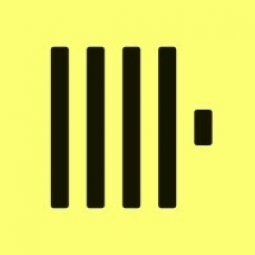下载PDF
Highlight.io's Observability Solution Powered by ClickHouse: A Comprehensive Case Study
技术
- 应用基础设施与中间件 - 中间件、SDK 和库
- 平台即服务 (PaaS) - 应用开发平台
适用行业
- 水泥
- 建筑与基础设施
适用功能
- 产品研发
用例
- 行为与情绪追踪
- 泄漏与洪水监测
服务
- 云规划/设计/实施服务
- 系统集成
挑战
Highlight.io 是一个开源可观察性平台,最初专注于会话重放和前端 Web 开发功能。然而,随着对全栈可观察性的需求增长,该平台需要扩展其产品。这种扩展对于使开发人员能够跟踪 Web 应用程序中的用户体验、识别后端错误并分析其基础设施中的相关日志是必要的。面临的挑战是将这些功能集成到单窗格视图中以简化故障排除过程。此外,该平台旨在在 ClickHouse 的支持下向其堆栈添加日志记录功能,通过捕获和分析服务器端日志来提供对应用程序的更深入的了解。目标是处理高数据摄取率并确保开发人员可以实时访问最新信息。
关于客户
Highlight.io 的客户是需要为其应用程序提供全面可观测性解决方案的开发人员。这些开发人员需要一个平台,使他们能够跟踪 Web 应用程序中的用户体验、识别后端错误并分析其基础设施中的相关日志。他们需要一种能够处理高数据摄取率并提供实时信息的解决方案。客户还需要一个易于安装并与现有系统无缝集成的平台。他们重视快速访问和分析用户会话、日志和错误信息以更有效地识别和解决问题的能力。此外,他们还欣赏可以处理多租户和扩展的平台。
解决方案
Highlight.io 将 ClickHouse 集成到其平台中,以处理高数据摄取率并提供实时信息。该平台的架构包括使用 React 和 TypeScript 构建的前端以及使用 Go 构建的后端,利用 ClickHouse 来存储日志数据并将其与其他数据存储中的信息相结合。这种集成使开发人员能够快速访问和分析用户会话、日志和错误信息,帮助他们更有效地识别和解决问题。要安装Highlight.io,客户只需通过安装各自的Highlight.io SDK 添加几行代码即可。该平台使用云托管的 OpenTelemetry 代理,公开供客户的 SDK 连接,该代理包装了 OpenTelemetry SDK 以保持安装简单。摄取后,数据将存储在单个表中,其中项目 ID 作为主键的一部分,用于处理多租户和扩展。
运营影响
数量效益
相关案例.

Case Study
System 800xA at Indian Cement Plants
Chettinad Cement recognized that further efficiencies could be achieved in its cement manufacturing process. It looked to investing in comprehensive operational and control technologies to manage and derive productivity and energy efficiency gains from the assets on Line 2, their second plant in India.

Case Study
IoT System for Tunnel Construction
The Zenitaka Corporation ('Zenitaka') has two major business areas: its architectural business focuses on structures such as government buildings, office buildings, and commercial facilities, while its civil engineering business is targeted at structures such as tunnels, bridges and dams. Within these areas, there presented two issues that have always persisted in regard to the construction of mountain tunnels. These issues are 'improving safety" and "reducing energy consumption". Mountain tunnels construction requires a massive amount of electricity. This is because there are many kinds of electrical equipment being used day and night, including construction machinery, construction lighting, and ventilating fan. Despite this, the amount of power consumption is generally not tightly managed. In many cases, the exact amount of power consumption is only ascertained when the bill from the power company becomes available. Sometimes, corporations install demand-monitoring equipment to help curb the maximum power demanded. However, even in these cases, the devices only allow the total volume of power consumption to be ascertained, or they may issue warnings to prevent the contracted volume of power from being exceeded. In order to tackle the issue of reducing power consumption, it was first necessary to obtain an accurate breakdown of how much power was being used in each particular area. In other words, we needed to be able to visualize the amount of power being consumed. Safety, was also not being managed very rigorously. Even now, tunnel construction sites often use a 'name label' system for managing entry into the work site. Specifically, red labels with white reverse sides that bear the workers' names on both sides are displayed at the tunnel work site entrance. The workers themselves then flip the name label to the appropriate side when entering or exiting from the work site to indicate whether or not they are working inside the tunnel at any given time. If a worker forgets to flip his or her name label when entering or exiting from the tunnel, management cannot be performed effectively. In order to tackle the challenges mentioned above, Zenitaka decided to build a system that could improve the safety of tunnel construction as well as reduce the amount of power consumed. In other words, this new system would facilitate a clear picture of which workers were working in each location at the mountain tunnel construction site, as well as which processes were being carried out at those respective locations at any given time. The system would maintain the safety of all workers while also carefully controlling the electrical equipment to reduce unnecessary power consumption. Having decided on the concept, our next concern was whether there existed any kind of robust hardware that would not break down at the construction work site, that could move freely in response to changes in the working environment, and that could accurately detect workers and vehicles using radio frequency identification (RFID). Given that this system would involve many components that were new to Zenitaka, we decided to enlist the cooperation of E.I.Sol Co., Ltd. ('E.I.Sol') as our joint development partner, as they had provided us with a highly practical proposal.

Case Study
Splunk Partnership Ties Together Big Data & IoT Services
Splunk was faced with the need to meet emerging customer demands for interfacing IoT projects to its suite of services. The company required an IoT partner that would be able to easily and quickly integrate with its Splunk Enterprise platform, rather than allocating development resources and time to building out an IoT interface and application platform.

Case Study
Bridge monitoring in Hamburg Port
Kattwyk Bridge is used for both rail and road transport, and it has played an important role in the Port of Hamburg since 1973. However, the increasing pressure from traffic requires a monitoring solution. The goal of the project is to assess in real-time the bridge's status and dynamic responses to traffic and lift processes.

Case Study
Bellas Landscaping
Leading landscaping firm serving central Illinois streamlines operations with Samsara’s real-time fleet tracking solution: • 30+ vehicle fleet includes International Terrastar dump trucks and flatbeds, medium- and light-duty pickups from Ford and Chevrolet. Winter fleet includes of snow plows and salters.






